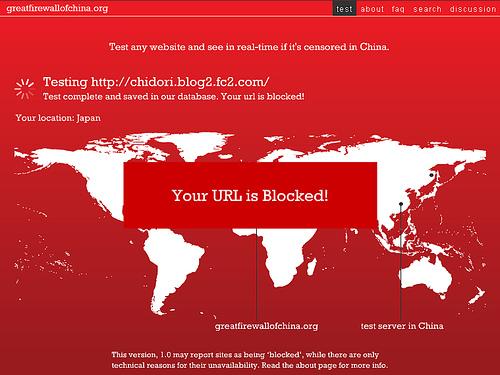Staying informed about global events is one of the greatest privileges of our modern era. Through the internet, you can explore what people in Australia, Malaysia, Iceland, and other places wear, eat, produce, and think. Yet not all citizens enjoy this open access. Countries like North Korea, China, and Russia impose strict web censorship, restricting access to social media, foreign news portals, and platforms such as Instagram, Youtube, and Facebook. You might have heard of the Chinese Great Firewall, officially known as the Golden Shield Project – a system of internet censorship and surveillance in China that became operational in 2000.
While these limitations may be viewed as discriminatory and a violation of human rights, their impact depends on the context in which the restrictions were implemented. In fall 2022, for instance, Russian users began experiencing difficulties accessing Meta applications and news websites like Meduza and the BBC – a clear example of efforts to control information flow. Although the underlying political reasons are complex, our focus here is on the broader educational implications.

Governments that restrict access by presenting only a single perspective can effectively shape public opinion. Moreover, Individuals who lack the technical skills to use VPN services are confined to pro-government content. This “spoon-fed” information leaves little room for critical analysis and stifles the questioning of ideas, which can ultimately lead to public concerns. Consider China, where many citizens have never had access to Western social media. For this reason, Chinese media and IT companies have developed platforms that mirror or even surpass Western alternatives. Take WeChat, for example: a multifunctional platform that lets users book tickets, pay for shopping, send messages, and even store passport information for identification purposes.
Having lived in Russia, China, the United States, and Canada, I’ve seen firsthand how social media control can impact public opinion. More discerning readers question the information they consume, while others accept it uncritically. Speaking Russian, English, and Chinese has shown me that the same events are often portrayed differently depending on local policies. Even the news in Canada and the United States can vary significantly. The key is to check a variety of sources to build a comprehensive picture, rather than relying on a single perspective that might serve the interests of a particular company, country, or marketing team. Recent elections around the world have demonstrated how easily an uncritical public can be influenced.
Another emerging issue is the rise of AI-generated images often called AI art or deepfakes. While a keen eye can sometimes detect whether a photo has been generated, altered, or modified, not everyone, especially older individuals, may have that ability. As tools like Midjourney continue to improve and produce nearly flawless images, we’ve entered an era where deepfake videos and photos can deceive viewers, even fabricating fraudulent online relationships. This is likely just the beginning of a new era in which social media not only influences opinions but also reshapes our perception of reality. Unfortunately, there have already been some cases where AI-generated photos were used for marketing purposes, leading to misinformation and lawsuits. For example, the widely known “Wonka” experience in Glasgow last year, where promotional materials featured AI-generated images to create hype and sell out events, but in real life the event lacked any actual photo zones.
That said, if we set aside concerns about misinformation, brainwashing, and censorship on the open internet, social media still offers endless entertainment. After all, where else can you spend hours binge-watching videos of wild, playful orange cats?
In conclusion, it is fascinating to witness how technology continuously reshapes the way we access, interpret, and interact with information. But at what cost? That is a question I find myself contemplating. As an educator, I also feel the w on weight of responsibility, but I am uncertain about how to teach children to be ready for the today`s digital landscape. I struggle even with guiding my nephew in Roblox, let alone the open internet. It is incredibly challenging to help children navigate various web pages filled with misleading information and the ever-growing presence of deepfakes lurking on the other side of the screen. Thus, I guess it is another responsibility for educators these days to teach students be digitally literate.
References
ABC 7 Chicago. (2024, February 28). ‘Wonka’ experience in Glasgow ends in chaos, police called over AI-generated advertisements [Video]. YouTube. https://youtu.be/x5hQF7BTe7s
Chan, C., Dao, A., Hou, J., Jin, T and Tuong, C. (2011). Free speech vs maintaining social cohesion. Stanford University. https://www-cs-faculty.stanford.edu/people/eroberts/cs181/projects/2010-11/FreeExpressionVsSocialCohesion/
Good morning Britain. (2024, March 6). 77-year-old scammed out of £17,000 by deepfake scammer using AI-generated videos [Video]. YouTube. https://youtu.be/1Kv5njt9X5c
Government of Canada. (n.d.). Artificial Intelligence and Data Act. Government of Canada. https://ised-isde.canada.ca/site/innovation-better-canada/en/artificial-intelligence-and-data-act
Human Rights Watch. (2020). In China’s, the “Great Firewall” is changing a generation. https://www.hrw.org/news/2020/09/01/china-great-firewall-changing-generation
Huo, J. & Bond, S. (2023). New study shows just how Facebook’s algorithm shapes conservative and liberal bubbles. NPR. https://www.npr.org/2023/07/27/1190383104/new-study-shows-just-how-facebooks-algorithm-shapes-conservative-and-liberal-bub
Oxford University. (2021). Social media manipulation by political actors an industrial scale problem – Oxford report. https://www.ox.ac.uk/news/2021-01-13-social-media-manipulation-political-actors-industrial-scale-problem-oxford-report
Recent Comments